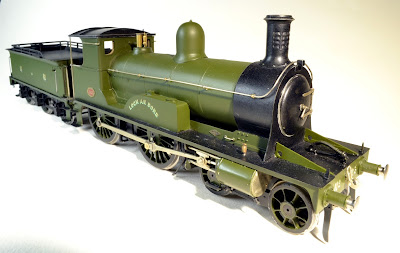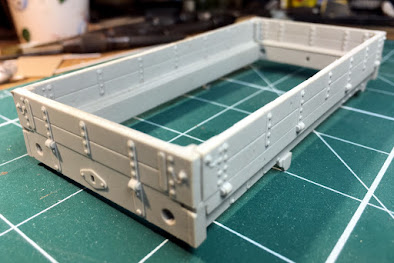These accurate 7mm scale resin castings are designed to take the strain out of building a HR swivel cradle wagon, they are not a complete kit, they are aids to scratch building, they are the difficult parts of the wagon. Everything else needed to complete the multi media model can purchased from the trade or can be simply hand made. Below I'll show you how I completed the wagon, my build is not compensated, there are no rocking w-irons or sprung axleboxes, however these could be contrived, it's up to you how you complete the model.
Price for one set of resin parts...£22.50 plus p/pkg at cost £1.50
Order a pair and it's post free.
Order 3 or more and discount is 10%.
Contact Pete on...
armstrongps1@gmx.com
07342 637 813
017687 71302
Or by mail at..
21 Manor Park
Keswick, Cumbria,
CA12 4AB
I made two wagons as examples as I think they probably worked in pairs in service. The combined w-iron, spring and axle box castings are from my own master patterns, cast in silicone moulds in my workshop. It's a simple expedient and both wagons run very well indeed without compensation. Couplings are hand made, the hook being cut from 1.25mm nickle silver sheet and the links formed on a jig from 0.8mm wire. Suitable couplings, which match the square holes in the buffer beam, can be obtained from CPL. Horse hooks are brass castings which I source form 62C Models along with the brake lever guides, which can be seen to better effect below. I have added a few holes and the pin, which goes into these, dangles on a fine chain attached half way up the guide.
The simple one piece castings were drilled for Slaters' axle bearings then glued to the solebars with the axles in place, providing the axles are parallel in all planes the wagon will run smoothly. Castings similar to these can be obtained from Invertrain.
The brake arm and shoe was cut from 0.7mm n/s sheet and the brake lever from 0.45mm n/s. Retaining chains have been added to the stanchions and the chains, turnbuckles and hooks that secured the load can be seen attached to the corner eye bolts, these can be obtained from CPL Products.
Watch this space for a picture of the painted wagon complete with number plate.






































